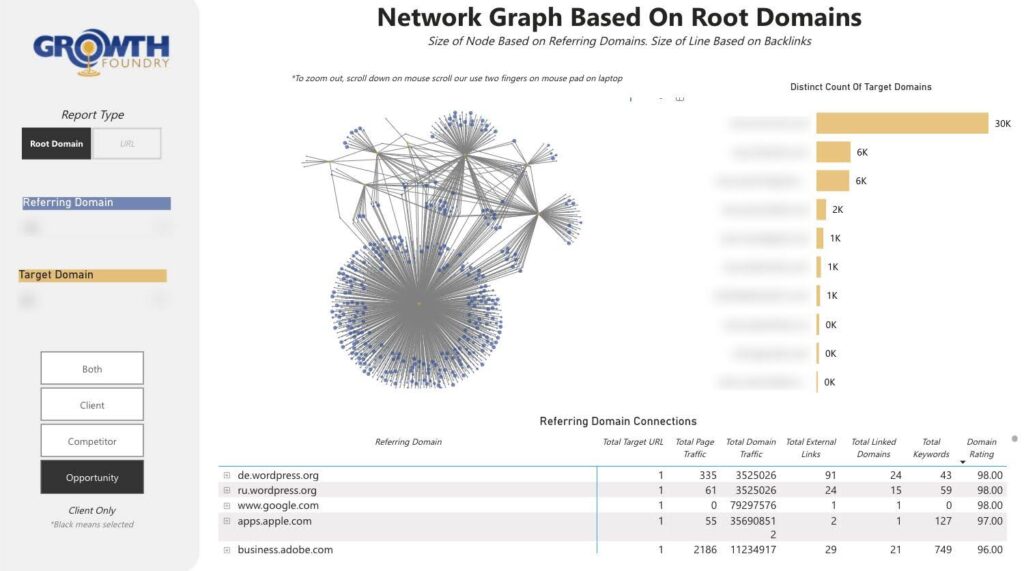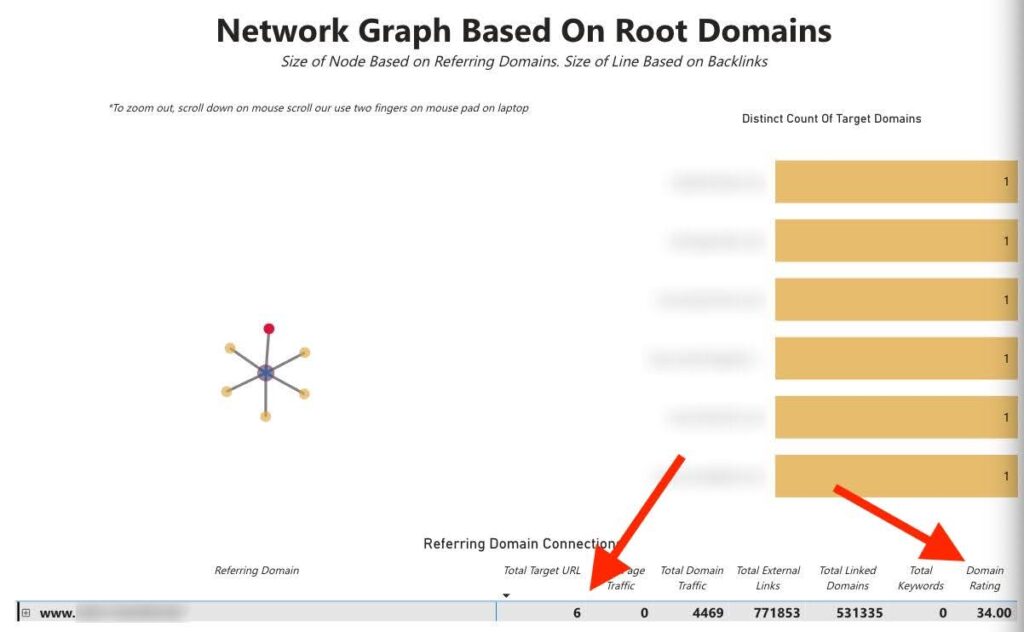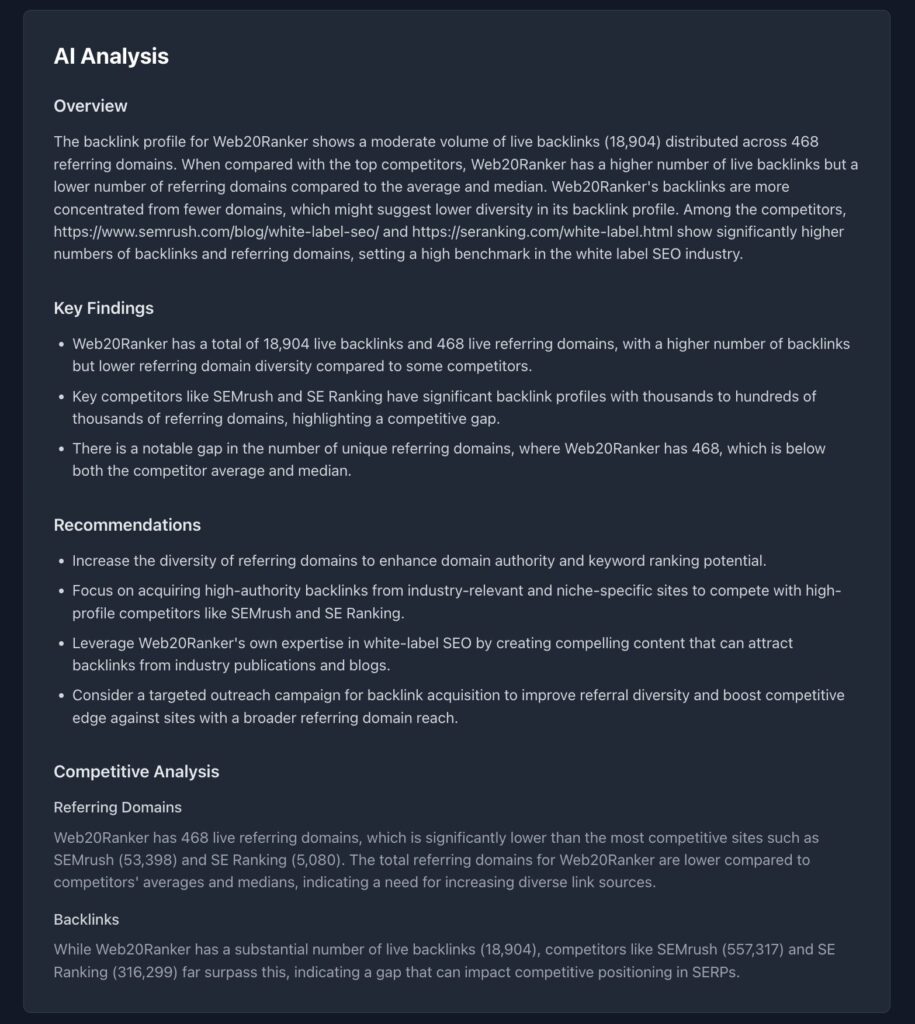As we embark on our journey into the detailed world of backlink analysis and its strategic implementation, it’s crucial to establish a strong foundational philosophy. This guiding principle is designed to streamline the process of creating impactful backlink campaigns, ensuring that we maintain clarity and purpose as we dive into the complexities of this subject.
In the competitive landscape of SEO, we advocate for the practice of reverse engineering the successful tactics of our competitors. This vital step not only offers valuable insights into their methodologies but also helps shape an actionable plan that will steer our optimization initiatives effectively.
Navigating the intricacies of Google's sophisticated algorithms can be quite daunting, especially since we often have to rely on sparse clues, such as patents and quality rating guidelines. While these resources can ignite innovative ideas for SEO testing, skepticism is essential; we must critically assess these insights rather than accept them blindly. The applicability of older patents in today's ranking algorithms remains ambiguous, making it imperative to gather these insights, conduct rigorous tests, and validate our hypotheses using contemporary data.

The SEO Mad Scientist adopts a detective-like approach, employing these clues to create a series of tests and experiments. While this theoretical framework is certainly beneficial, it should only constitute a minor part of your comprehensive SEO campaign strategy.
Next, we will explore the critical importance of competitive backlink analysis in refining our approach.
I firmly assert that reverse engineering the successful components within a SERP is the most effective strategy for directing your SEO optimizations. This method is unmatched in its potential effectiveness.
To further illustrate this principle, let’s draw an analogy from seventh-grade algebra. When solving for ‘x’ or any variable, we must evaluate existing constants and apply a series of operations to determine the variable's value. By observing our competitors’ strategies, we can analyze the topics they cover, the links they secure, and their keyword densities.
However, despite the allure of amassing hundreds or even thousands of data points, much of this data may not yield substantial insights. The true advantage of analyzing larger datasets lies in recognizing trends that correlate with rank fluctuations. For many, a focused compilation of best practices derived from reverse engineering is sufficient for effective link building.
The ultimate goal of this strategy is not merely to match competitors but to surpass their performance. While this objective may seem daunting, particularly in highly competitive niches where achieving parity with top-ranking sites could take years, attaining baseline equivalence is merely the first step. A meticulous, data-driven backlink analysis is paramount for achieving success.
After establishing this baseline, your objective should shift toward exceeding competitor performance by providing Google with the appropriate signals to enhance your rankings, ultimately securing a prominent spot within the SERPs. Unfortunately, these crucial signals often boil down to what could be considered common sense in the realm of SEO.
Although I find this notion somewhat uncomfortable due to its subjective nature, it is vital to acknowledge that experience, experimentation, and a proven history of SEO success contribute to the confidence needed to pinpoint where competitors fall short and how to address those deficiencies in your strategic planning.
5 Actionable Steps for Dominating Your SERP Ecosystem
By thoroughly investigating the intricate ecosystem of websites and links that contribute to a SERP, we can unearth a treasure trove of actionable insights that are essential for developing a robust link plan. In this section, we will systematically categorize this information to identify invaluable patterns and insights that will enhance our campaign's effectiveness.

Let’s take a moment to discuss the rationale behind organizing SERP data in this structured way. Our method emphasizes conducting a thorough analysis of the top competitors, creating a comprehensive narrative as we delve deeper into our findings.
A quick search on Google will reveal an astonishing volume of results, sometimes surpassing 500 million. For example:


While our primary focus remains on the top-ranking websites for our analysis, it's crucial to recognize that the links directed toward even the top 100 results can hold statistical significance, as long as they are not spammy or irrelevant.
My aim is to gain profound insights into the factors that shape Google's ranking decisions for top-ranking sites across various search queries. With this valuable information, we can better formulate effective strategies. Here are some objectives we can achieve through this analytical process.
1. Uncover Key Links Shaping Your SERP Ecosystem
In this context, a key link is defined as one that consistently appears in the backlink profiles of our competitors. The accompanying image illustrates this point, indicating that certain links are directed toward nearly every site within the top 10. By examining a wider array of competitors, you can reveal even more intersections similar to the example shown here. This approach is supported by solid SEO theory, as validated by numerous reputable sources.
- https://patents.google.com/patent/US6799176B1/en?oq=US+6%2c799%2c176+B1 – This patent refines the original PageRank concept by integrating topics or context, recognizing that various clusters (or patterns) of links hold different levels of significance depending on the subject area. This serves as an early example of Google enhancing link analysis beyond a singular global PageRank score, suggesting that the algorithm detects patterns of links among topic-specific “seed” sites/pages and utilizes that information to adjust rankings.
Essential Quote Excerpts for Effective Backlink Analysis
Implication: Google identifies distinct “topic” clusters (or groups of sites) and employs link analysis within those clusters to generate “topic-biased” scores.
While it doesn’t explicitly state “we favor link patterns,” it indicates that Google examines how and where links emerge, categorized by topic—a more nuanced approach than relying on a single universal link metric.
“…We establish a range of ‘topic vectors.’ Each vector ties to one or more authoritative sources… Documents linked from these authoritative sources (or within these topic vectors) earn an importance score reflecting that connection.”
Insightful Quote from an Original Research Paper
“An expert document is focused on a specific topic and contains links to numerous non-affiliated pages on that topic… The Hilltop algorithm identifies and ranks documents that links from experts point to, enhancing documents that receive links from multiple experts…”
The Hilltop algorithm aims to identify “expert documents” for a topic—pages recognized as authorities in a specific field—and analyzes who they link to. These linking patterns can convey authority to other pages. While not explicitly stated as “Google recognizes a pattern of links and values it,” the underlying principle suggests that when a group of acknowledged experts frequently links to the same resource (pattern!), it constitutes a strong endorsement.
- Implication: If several experts within a niche link to a specific site or page, it is perceived as a strong (pattern-based) endorsement.
Though Hilltop is an older algorithm, it is believed that elements of its design have been integrated into Google’s broader link analysis algorithms. The concept of “multiple experts linking similarly” effectively demonstrates that Google scrutinizes backlink patterns.
I consistently seek positive, prominent signals that recur during competitive analysis and aim to leverage those opportunities whenever feasible.
2. Backlink Analysis: Discovering Unique Link Opportunities with Degree Centrality
The journey of identifying valuable links necessary for achieving competitive parity begins with a thorough examination of the top-ranking websites. Manually sifting through dozens of backlink reports from Ahrefs can be a labor-intensive process. Moreover, assigning this task to a virtual assistant or team member may lead to a backlog of ongoing tasks.
Ahrefs provides users with the capability to input up to 10 competitors into their link intersect tool, which I believe is the most effective tool available for link intelligence. This tool allows for streamlined analysis if users are comfortable navigating its depth.
As previously mentioned, our focus is on extending our reach beyond the conventional list of links that other SEO professionals are targeting to maintain parity with the top-ranking websites. This strategy enables us to create a strategic advantage during the initial planning phases as we work to influence the SERPs.
Thus, we implement various filters within our SERP Ecosystem to pinpoint “opportunities,” defined as links that our competitors possess but we do not.

This process facilitates the quick identification of orphaned nodes within the network graph. By sorting the table based on Domain Rating (DR)—though I’m not particularly fond of third-party metrics, they can be beneficial for swiftly identifying valuable links—we can uncover potent links to integrate into our outreach workbook.
3. Efficiently Organize and Manage Your Data Pipelines
This strategy simplifies the addition of new competitors and their integration into our network graphs. Once your SERP ecosystem is established, expanding it becomes a seamless endeavor. You can also remove unwanted spam links, merge data from various related queries, and maintain a more comprehensive database of backlinks.
Effectively organizing and filtering your data is the initial step toward generating scalable outputs. This level of detail can reveal countless new opportunities that might have otherwise gone unnoticed.
Transforming data and establishing internal automations while incorporating additional layers of analysis can stimulate the development of innovative concepts and strategies. Tailor this process to your needs, and you’ll uncover numerous applications for such a setup, far beyond what can be discussed in this article.
4. Uncover Mini Authority Websites Using Eigenvector Centrality
In graph theory, eigenvector centrality posits that nodes (websites) gain importance as they connect to other significant nodes. The more critical the neighboring nodes, the higher the perceived value of the node itself.

This may not be beginner-friendly, but once your data is organized within your system, scripting to uncover these valuable links becomes a straightforward task, and even AI can assist you in this process.
5. Backlink Analysis: Capitalizing on Disproportionate Competitor Link Distributions
While the concept may not be novel, analyzing 50-100 websites in the SERP and pinpointing the pages that attract the most links is a sound method for extracting valuable insights.
We can concentrate exclusively on the “top linked pages” of a site, but this approach often yields limited actionable information, particularly for well-optimized websites. Typically, you’ll find a few links directed toward the homepage and primary service or location pages.
The optimal strategy is to target pages that exhibit a disproportionate number of links. To achieve this programmatically, you’ll need to apply mathematical filters, with the specific methodology left to your discretion. This task can be complex, as the threshold for outlier backlinks can vary greatly based on the overall volume of links—for example, a 20% concentration of links on a site with only 100 links versus one with 10 million links signifies a drastically different scenario.
For instance, if a single page garners 2 million links while hundreds or thousands of other pages collectively attract the remaining 8 million, it indicates that we should reverse-engineer that specific page. Was it a viral hit? Does it offer a valuable tool or resource? There must be a compelling reason for this influx of links.
Backlink Analysis: Understanding Unflagged Scores
With this valuable data, you can begin to explore why certain competitors are acquiring unusually high numbers of links to specific pages on their site. Utilize this understanding to inspire the creation of content, resources, and tools that users are likely to link to.
The potential of data is vast. This justifies investing time into developing a process for analyzing larger sets of link data. The opportunities available for you to capitalize on are virtually limitless.
Backlink Analysis: Comprehensive Guide to Crafting a Winning Link Plan
The initial step in this process involves sourcing reliable backlink data. We highly recommend Ahrefs due to its consistently superior data quality compared to its competitors. However, if feasible, combining data from multiple tools can further enhance your analysis.
Our link gap tool serves as an excellent resource. Simply input your site, and you’ll receive all the vital information:
- Visual representations of link metrics
- URL-level distribution analysis (both live and total)
- Domain-level distribution analysis (both live and total)
- AI-powered analysis for deeper insights
Map out the exact links you’re missing—this focus will assist in closing the gap and strengthening your backlink profile with minimal guesswork. Our link gap report offers more than just graphical data; it also provides an AI analysis, presenting an overview, key findings, competitive analysis, and link recommendations.
It’s common to uncover unique links on one platform that may not be available on others; however, it’s important to consider your budget and your ability to process the data into a coherent format.
Next, you will need a data visualization tool. There’s no shortage of options available to help you achieve your objectives. Here are a few resources to assist you in selecting one:
The Article Backlink Analysis: A Data-Driven Strategy for Effective Link Plans Was Found On https://limitsofstrategy.com
Post navigation
Previous Post
 Essential Do’s and Don’ts for Car Rentals in Toronto
Essential Do’s and Don’ts for Car Rentals in Toronto
